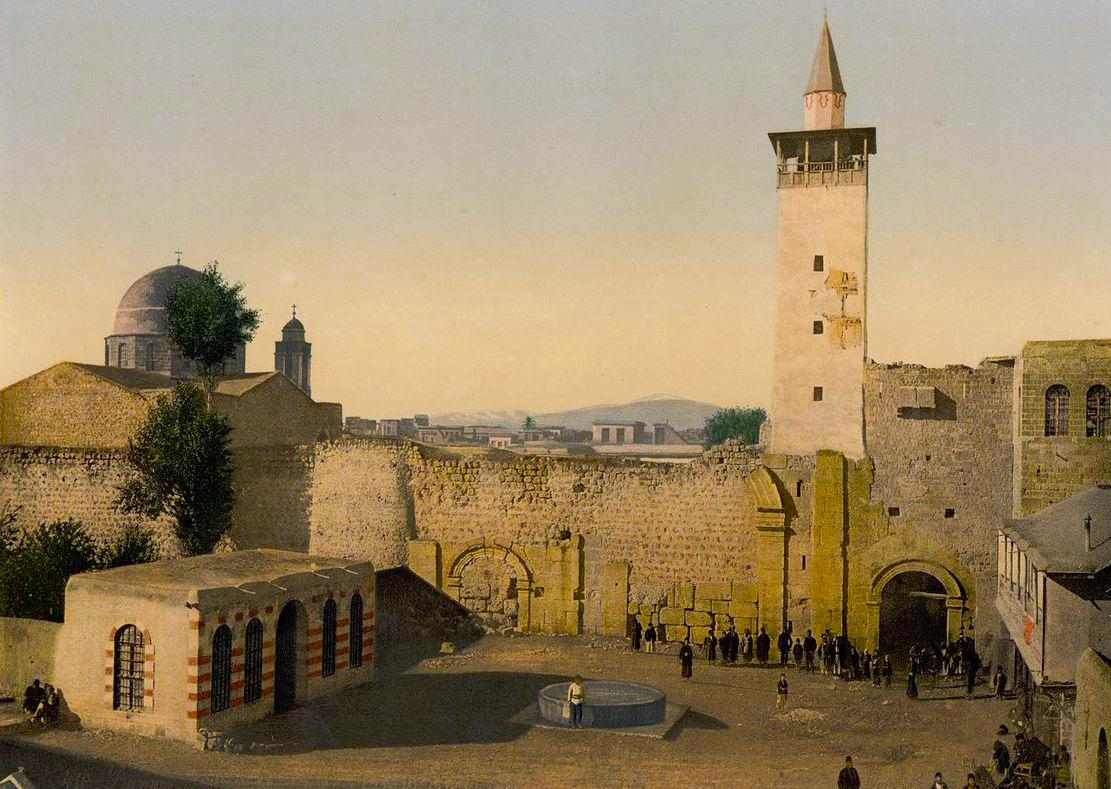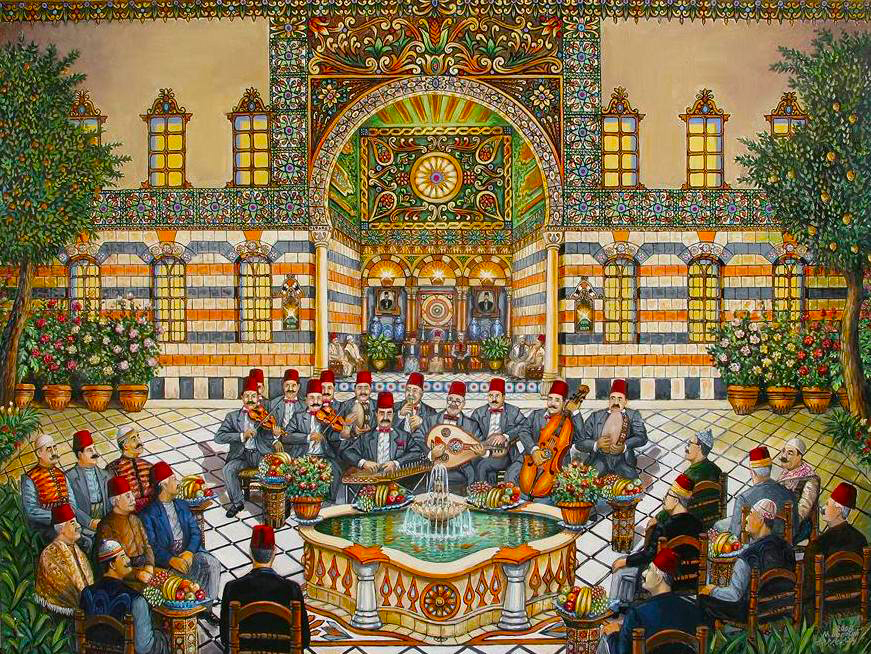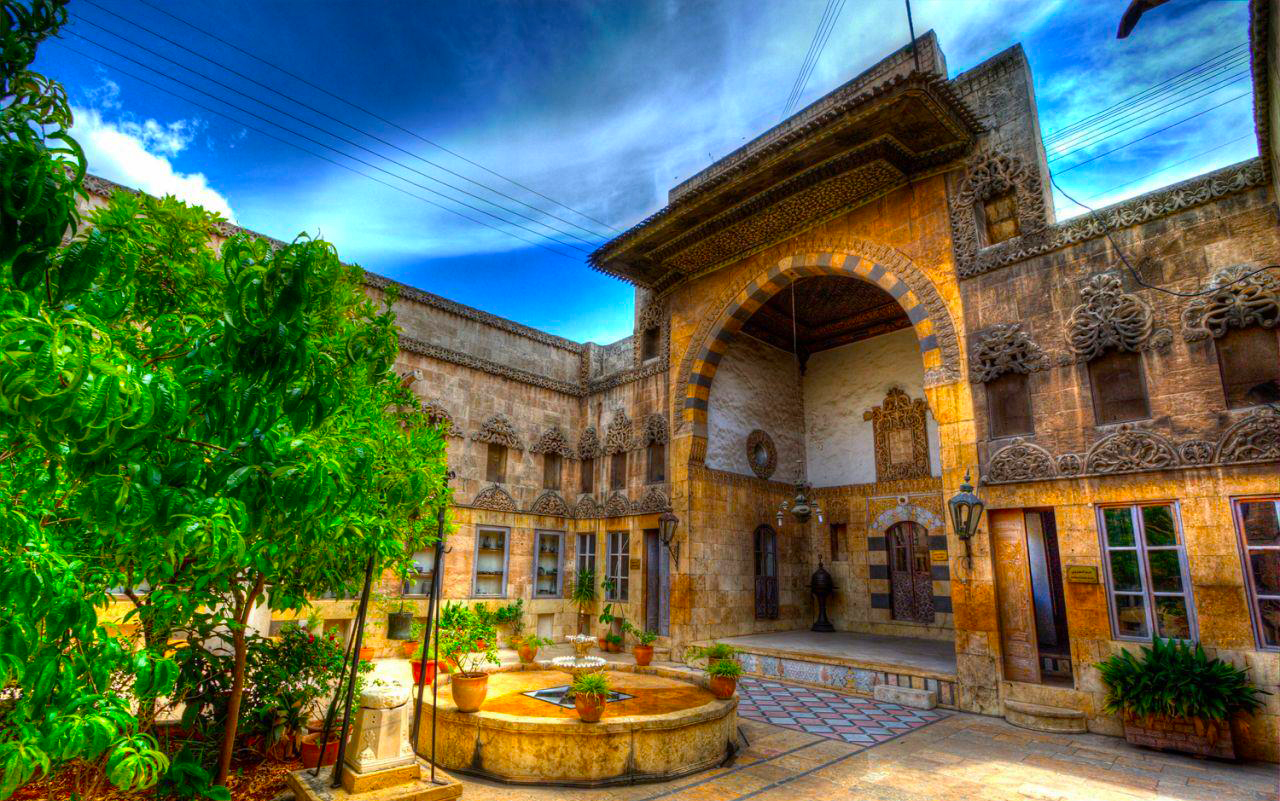Beit Ajqabash in Aleppo: A Hidden Gem of Ottoman Aleppo: Tucked away in the historic Al-Jdeideh quarter of Aleppo, Beit Ajqabash is one of the city’s finest examples of Ottoman-era architecture and cultural richness. Known also as the Ajqabash House Museum, this beautifully preserved 18th-century residence offers visitors a fascinating journey through Aleppine life, traditions, and design. With its intricate wooden ceilings, stone carvings, and peaceful courtyard, Beit Ajqabash is more than just a museum—it is a living memory of Aleppo’s golden age.
If you’re planning a trip to Aleppo or simply want to understand the soul of the city, Beit Ajqabash is a must-see. This article explores everything you need to know before your visit: its historical context, architectural features, museum collections, and practical tips for tourists.
A Brief History of Beit Ajqabash
Who Was Ajqabash?
Beit Ajqabash was originally the residence of Sheikh Qustaki Ajqabash, a wealthy Syrian merchant of Christian origin, who played a significant role in Aleppo’s social and commercial life during the late Ottoman period. The house was built around 1757, a time when Aleppo was a major trading hub connecting Europe, Persia, and the Arab world.
From Private Home to Museum
Like many historical homes in Aleppo, Beit Ajqabash was eventually repurposed for cultural use. In 1973, the house was officially transformed into the Museum of Popular Traditions (Museum of Aleppine Folk Heritage) by the Syrian Directorate-General of Antiquities and Museums. Since then, it has been a vital center for preserving and showcasing Aleppine daily life, customs, clothing, and architecture.
Architectural Features
A Masterpiece of Aleppine-Ottoman Style
Beit Ajqabash exemplifies the Ottoman residential architecture that once defined Aleppo’s wealthy merchant class. Its harmonious design combines elegance, privacy, and craftsmanship, reflecting the multicultural character of Aleppo itself.
- The Facade: From the narrow alleyways of Jdeideh, the entrance is subtle, with a modest wooden door. But stepping inside reveals a stunning contrast: ornate stonework, alternating black and white stones (ablaq), and intricate wood carvings.
- The Courtyard (Liwan): At the heart of the house is a peaceful central courtyard surrounded by arcades and greenery. A marble fountain sits at the center, once used to cool the home and provide calm ambiance.
- Rooms Around the Courtyard: These include reception rooms, guest rooms, and family quarters, all decorated with traditional Aleppine decor—plush cushions, wooden mashrabiyas (latticed windows), and painted ceilings.
- Ornamental Ceilings and Walls: Hand-painted floral motifs, Qur’anic inscriptions, and poetic verses adorn the ceilings and walls. These features showcase the refined aesthetic taste of Aleppo’s elite.
Hammam and Kitchen Areas
Beit Ajqabash also includes a private hammam (bathhouse)—a luxury feature in wealthy homes of the time. The old kitchen area reveals traditional tools, pots, and food storage techniques used in the 18th century.
The Museum of Popular Traditions
What’s on Display?
The museum inside Beit Ajqabash is dedicated to the traditional lifestyle of Aleppo, offering visitors a window into the city’s social fabric before the modern era. Displays include:
- Traditional clothing: Costumes from Aleppine families, wedding garments, fezzes, silk shawls, and embroidered vests.
- Household items: Copper coffee pots, water jugs, ceramic plates, wooden furniture, and cooking utensils from the 18th and 19th centuries.
- Aleppine crafts: Wood carving, textile weaving, and silver jewelry, representing Aleppo’s artisan class.
- Old photographs and manuscripts: Documents and photos that capture daily life in Ottoman and early 20th-century Aleppo.
Interactive Experience
The museum rooms are set up as lifelike dioramas. For example:
- A wedding chamber showing how the bride’s room was decorated.
- A merchant’s salon recreating how guests were hosted.
- A family dining area, displaying traditional floor seating and dining customs.
This makes the museum a warm and immersive experience rather than a static display.
Location and Accessibility
Where is Beit Ajqabash?
Beit Ajqabash is located in the Al-Jdeideh quarter, northeast of the Aleppo Citadel. This historic neighborhood is known for its narrow cobbled streets, old churches, khans (caravanserais), and traditional homes.
- Nearby attractions include:
- Al-Shibani School and Cultural Center
- Khan al-Wazir
- Al-Zeitoun Church
- Souq al-Jdeideh (boutiques and cafes)
Getting There
If you’re staying in central Aleppo, you can reach Beit Ajqabash on foot from most Old City locations. It’s best to explore the area as part of a walking tour.
- Opening hours: Usually 9:00 AM – 4:00 PM, closed on Fridays (check locally for current times)
- Entrance fee: Generally symbolic or free for locals; small fee for foreign tourists
Best Time to Visit
Season and Timing
- Spring and autumn offer ideal weather—mild temperatures and clear skies.
- Early mornings or late afternoons are best to avoid the midday heat and enjoy the soft light filtering into the courtyard.
Avoid visiting during major holidays unless you want to experience local crowds and celebrations.
With or Without a Guide?
While self-guided visits are possible, hiring a local tour guide can add rich context to your visit. Many guides are passionate about Aleppo’s architecture and culture and will bring stories of the house and its former owners to life.
Cultural Significance
A Testament to Coexistence
Beit Ajqabash is located in a historically Christian quarter of Aleppo, yet it reflects a blend of Islamic, Christian, and Armenian influences. This makes it a symbol of Aleppo’s multicultural harmony before modern divisions.
Reviving a Cultural Identity
Despite the damage suffered during recent conflicts in Syria, restoration efforts continue across Aleppo. Beit Ajqabash is among the buildings that survived relatively intact, and today it serves as a beacon of resilience and heritage.
It reminds both Syrians and visitors of the city’s deep cultural roots, proud craftsmanship, and long history of tolerance.
Photography and Etiquette
- Photography is allowed, but avoid using flash on delicate painted surfaces.
- Walk quietly and respectfully—many visitors come for reflective or educational purposes.
- Support any local crafts or donation boxes if available—it helps preserve the site.
Famous Old Houses in Aleppo
Beit Ghazaleh
One of the grandest mansions in Aleppo, located in the Jdeideh Quarter. Known for its richly decorated painted wooden ceilings and ornate stone carvings, it once hosted the Museum of Aleppine Memory. Though damaged, restoration efforts are ongoing.
Beit Achiqbash
Built in the 18th century, this house features a beautiful blend of Ottoman and local design with a stunning courtyard. It now serves as the Museum of Popular Traditions and is partially restored.
Beit Wakil
A 16th-century residence famous for its carved wooden balcony and the original “Aleppo Room” panels, which are now displayed in Berlin’s Pergamon Museum. The house still retains traditional Aleppine features.
Beit Junblatt
More of a palace than a house, this 16th-century mansion is known for its massive iwan and rich architectural detailing. It served as a museum before the war and is a striking symbol of Aleppo’s elite heritage.
Dar Zamaria & Beit Dallal
These charming restored houses function as boutique hotels today, offering visitors the chance to experience Aleppine architecture firsthand.
Despite wartime damage, Aleppo’s old houses remain powerful symbols of the city’s layered history—where Islamic, Christian, and Armenian influences blend beautifully in stone, wood, and craftsmanship.
Summary
Aleppo’s old houses—Beit Ghazaleh, Beit Achiqbash, Beit Wakil, Beit Junblatt and others—embody centuries of art, commerce, interfaith life, and architectural sophistication. Each is comparable in its own way to the celebrated homes of Old Damascus, yet distinctively Aleppine: stone‑heavy carving, strong courtyards, hammams, and a fusion of styles anchored in trade‑driven prosperity.
As a visitor, you’ll discover not just buildings, but the rhythms of past lives—dining in courtyard shade, reading from wooden‑paneled walls, bathing in hammams, and walking the labyrinth of Jdeideh’s narrow alleys where history whispers from every carved window lintel.



